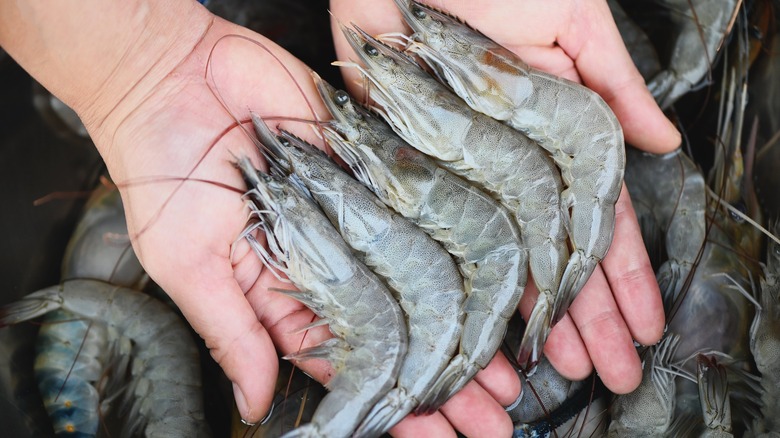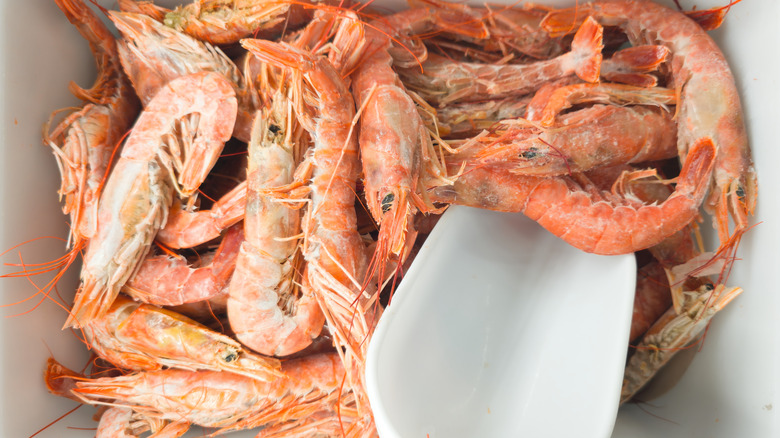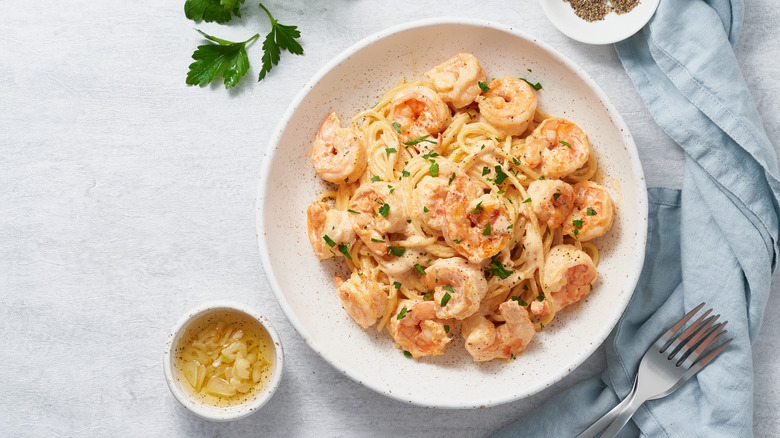What Is That Odd Orange Paste On Raw Shrimp?
If you opt to buy your shrimp whole, meaning it's still got its head attached and is still in its shell, you might find that a rare few come with appears to be an orange substance beneath their bellies. That, my friends, is the shrimp's roe (or eggs), and it comes from wild-caught female shrimp. The roe's hue can vary in color from yellow, amber, to bright orange, and some of these reliably delicious crustaceans can even carry bright blue eggs. But you won't find the eggs on shrimp year-round; this is a phenomenon that happens only when the shrimp are caught during spawning season.
Spawning season windows widely vary, so depending on the type you're buying and where you're located, wild shrimp can carry eggs during different parts of the year. This does beg one big question, however, and I know you're all wondering about this now: Is shrimp roe edible? The answer is yes, but only under certain conditions.
Shrimp roe should be cooked before eating it
As tempting as it might be to eat raw shrimp roe, since it resembles an expensive caviar of sorts, it's generally advised that you don't. This is simply due to a general rule of food safety — just as most people advise against eating shrimp raw in general — you really don't want to risk falling ill due to a foodborne illness. This is more of a concern for those who have compromised immune systems, but food poisoning isn't fun for anyone, so it's best to avoid eating it like that altogether.
Instead, if you're curious and would like to eat the roe, you'll want to cook it until it's gone from clear to an opaque color. That way, you'll know it's safe to eat, and you're likely to not get sick that way. And in fact, some people even encourage you to eat the shrimp roe because it has its own culinary utility in dishes.
How to use shrimp roe in cooking
Good thing shrimp roe is actually great in cooking. If you're going to cook your shrimp head-on and unshelled, you can simply leave the roe intact while you cook it via your method of choice. That way, when you're in the process of eating it, you can pluck the roe off and enjoy it. Those who enjoy it say it's got a briny taste and that it's also a great finisher to add to starchy dishes like pasta or risotto to give your final dish an added boost in seafood flavor. Since the yield is very low (shrimp are small, after all), you can also use it as a garnish for other dishes like seafood dips, individual bites like topped crackers, or deviled eggs.
Since I'm an advocate of wringing everything you can from your ingredients, it's great to be aware that shrimp roe has its usefulness. And don't throw away those shrimp shells either, since they contain extra flavor and can be used for the base of a stock.


